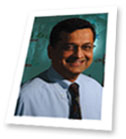KEYNOTE SPEAKER
Sargur N. Srihari (University at Buffalo, SUNY)

Sargur Srihari is a computer scientist whose work is on algorithms for pattern recognition and machine learning. The principal impact of his work has been on automatic methods of handwriting recognition and in defining the field of computational forensics. Sargur Srihari is currently a SUNY Distinguished Professor in the Department of Computer Science and Engineering at the University at Buffalo, The State University of New York, where he teaches courses in pattern recognition, machine learning and data mining. With support from the United States Postal Service for over 20 years, he founded CEDAR, the Center of Excellence for Document Analysis and Recognition, in 1991, which had a major impact on the development of various aspects of the field. Research at CEDAR led to a new thread of work leading to the first large-scale handwritten address interpretation systems deployed by the IRS and by the USPS. Srihari has served on the National Academy of Sciences Committee on Identifying the Needs of the Forensic Science Community (2007-08), National Library of Medicine Board of Scientific Counselors (2001-07), Expert Working Group on Human Factors in Latent Print Analysis (2008-10), chaired committees of the International Association for Pattern Recognition. He is presently chairman of CedarTech, a corporation for university technology transfer.
Srihari's honors include: Fellow of the Institute of Electronics and Telecommunications Engineers (IETE, India) in 1992, Fellow of the Institute of Electrical and Electronics Engineers (IEEE) in 1995, Fellow of the International Association for Pattern Recognition in 1996 and distinguished alumnus of the Ohio State University College of Engineering in 1999. Srihari is an author of over 300 research papers and journals. Srihari received a B.Sc. in Physics and Mathematics from the Bangalore University (National College) in 1967, a B.E. in Electrical Communication Engineering from the Indian Institute of Science, Bangalore in 1970, and a Ph.D. in Computer and Information Science from the Ohio State University, Columbus in 1976.
|

